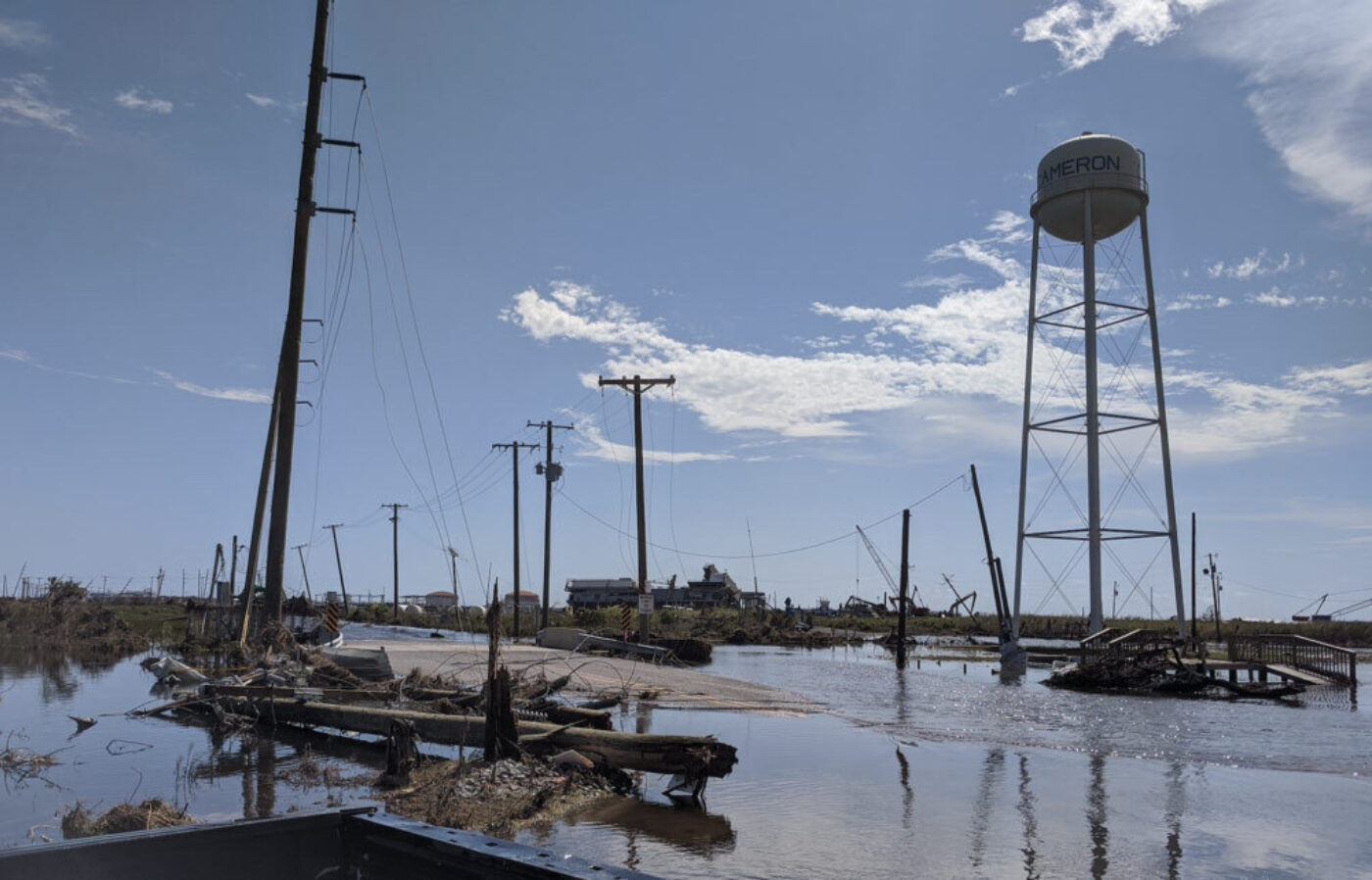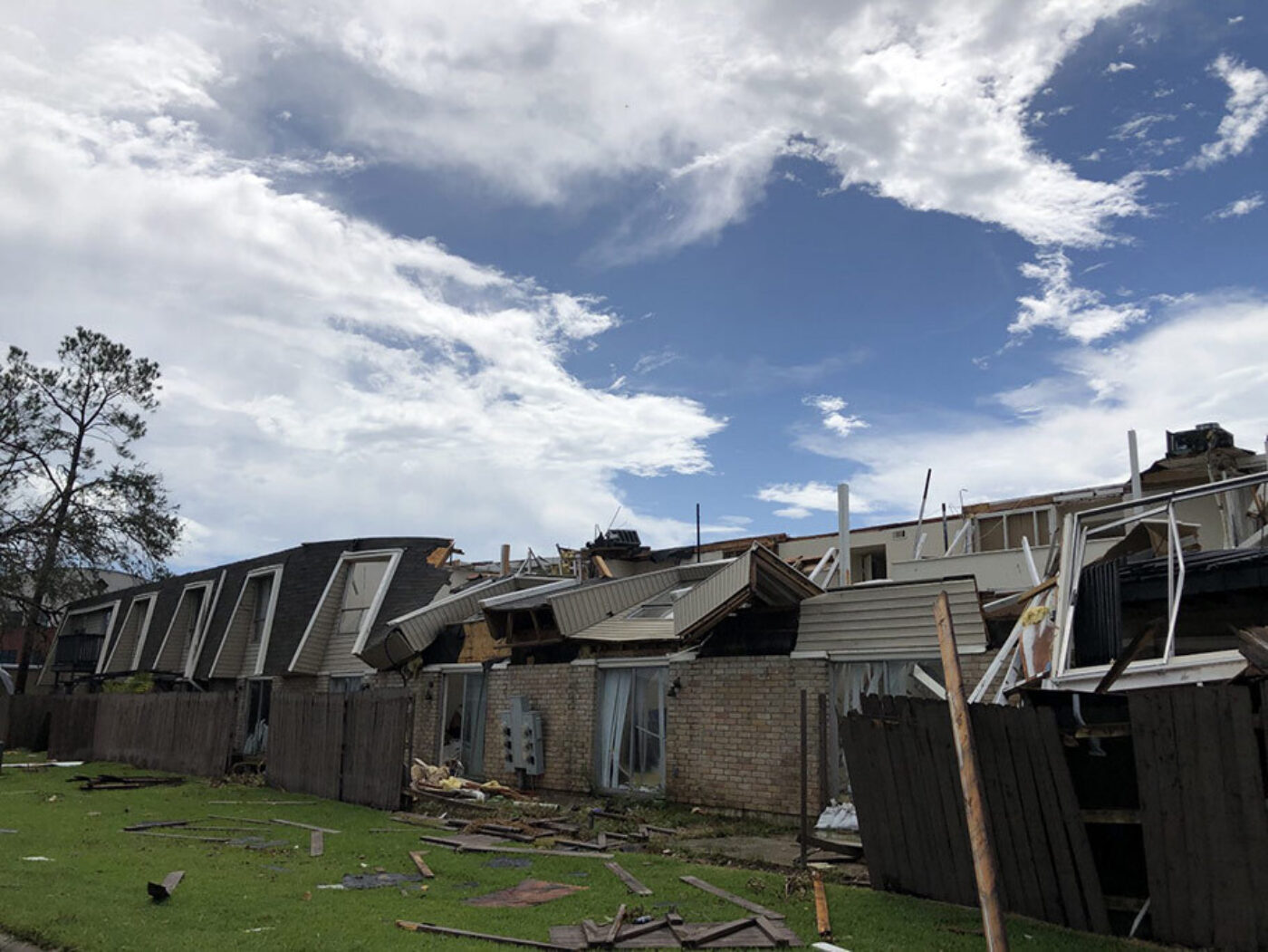Our new administration can champion systems-change within FEMA for a more equitable approach.
Every new administration inherits broken systems. Sometimes the challenges are structural; sometimes they are functions of a world that has evolved faster than legislation and some are legacy challenges that have vexed administrations for decades.
Not all of these broken systems result in unnecessary human suffering, but the current system for how America recovers from disaster is one that causes harm — physically, mentally and economically.
We all now have an evolved understanding of the importance of home as so many of us use home for school, place of worship and work. Last year storm names went midway into the Greek alphabet and more than 50,000 fires burned 9.5 million acres. Climate change places an increasing amount of families’ homes in peril annually. This alone could make addressing problems with our disaster recovery system important for right now.

Photo: Hurricane Laura damage in Cameron, Louisiana.
Long-simmering inequalities have also risen to the surface. Lower-income communities have been pushed into environmentally vulnerable areas for years. The impact of disasters on these individuals and families — and the lack of home that comes with it — is particularly challenging when home is where we are told to remain to stay safe.
Additionally, we’re finally facing a legacy of structural racism more head-on and few segments of American life are as riddled with institutionalized racism as housing. Whether it is redlining or housing policy, America has hindered black people’s ability to gain equity.
The Biden-Harris administration has said the right things about all these issues. They acknowledge and articulate a commitment to undo the legacy of institutionalized racism, and they have been vocal in their desire to face the realities of climate change and its impact on at-risk communities. Recent executive orders seem to confirm this.
FEMA was established 41 years ago to lead America in preparing, preventing, responding to and recovering from disasters. But disasters themselves have evolved in the last few decades, in kind, severity and frequency, in a way that FEMA’s processes have not.
Confusing applications and inconsistent and opaque assessments are just two aspects of this broken disaster recovery system — a system extending well beyond FEMA — that cause additional harm to people who have already been traumatized by a disaster. These two issues have feasible solutions that, if implemented, could greatly benefit the disaster-impacted and reduce this legacy of additional harm.
We meet so many disaster survivors — hardworking people who have achieved the American dream of homeownership — who have never asked anyone for help.
Hard workers like Ms. Jean, now retired from social services, lives on a fixed income and is proud to maintain the home she grew up in. She’s never asked the government for help. At one point in her career, she was the one working for the government and helping those facing eviction and navigating welfare. But when Hurricane Laura sent a tree through her roof, she, at 84, was quickly overwhelmed with all the processes ahead of her.
Homeowners like Ms. Jean would never want to leave their home and neighbors, their de facto families in many ways. So when they begin to fill out their FEMA applications — the first of several — they answer a question about being willing to relocate with a firm “no.” Many have lived in their homes their entire life, and so had their parents.
But they don’t know — and no one tells them — that this question isn’t about permanent relocation. It is a pre-qualifier for rental assistance during home repairs. Checking “no” eliminates you from receiving any temporary rental assistance while your home is repaired.
The process for accessing the full amount of FEMA assistance is a complicated one involving multiple applications and rejections. The first application — the one with confusing questions about relocation — is the one for Individual Assistance (IA). Once this one is rejected by FEMA, you must then apply for an SBA loan and then be rejected again in order for your original FEMA application to be considered for a grant. More than 50% of the questions are duplicated in these two separate forms.
There’s already a governmental model for addressing issues like this. FEMA’s multiple-application approach could easily be modified to work like the Free Application for Federal Student Aid (FAFSA) where applicants fill out a single application and learn all the assistance they may be eligible for.

Photo: Homes in Lake Charles, Louisiana after Hurricane Laura.
As it is currently, survivors often drop out of the process — it’s too confusing and too overwhelming. It doesn’t make sense that you’re supposed to be rejected so you can apply for a different kind of help. A recent Government Accountability Office report on FEMA’s performance from 2016 to 2018 found that 1.7 million people referred to SBA after their initial FEMA rejection did not complete the process even though their need for assistance remained.
Low-income communities and communities of color are often hit hardest and wait the longest to receive assistance. This results in decreased home values as neighborhoods wait years for much-needed repairs. This is vital for African American communities where a home represents a disproportionate amount of net worth, and where communities of color lose net worth in the course of disaster recovery. The lack of adequate recovery assistance keeps more individuals and families in limbo, amplifying wealth gaps, physical and mental health issues and job insecurity.
FEMA damage assessments themselves have long been problematic using methods easily subject to assessor bias and their perceptions of a home or neighborhood. Disaster assessors are contractors, not FEMA employees, and are paid per inspection. The more you get done, the more you get paid. Accuracy doesn’t drive compensation and, as the contractors often come from far-away communities, opportunities for unconscious bias are rife.
FEMA did quickly pivot in a time of need this hurricane season. Due to the impact of COVID-19, assessments were conducted via a phone call where homeowners relayed damage to an assessor. Those impacted by disaster, overwhelmed and still traumatized, don’t necessarily know where to look for signs of mold and may not be able to see all the damage caused by a tree through the roof. Accurately communicating damage and its full impact is a challenge.
The inexperience of homeowners on the other ends of these calls is reflected in the significant drop in the average award size from FEMA this year. After Hurricane Michael in October 2018, a wind-based storm similar to Hurricane Laura, the average FEMA award was $3,917. The average award after Laura in August was just $1,900.
Insurance companies use satellite and flyover imagery among other tech to accurately assess damages in days instead of months — a faster and more equitable approach where decisions are made based on consistent photographic evidence instead of a subjective opinion. Earlier this year as part of their interim COVID-19 policy, FEMA did announce they would use “geospatial inspections,” but it’s unclear if it occurred and on what scale.
It doesn’t have to be this way.
Pushing for more equitable assessment measures would go a long way in maintaining housing value for minority communities. With the impacts of climate change complicating our 100- and 500-year flood plans — and increasing the vulnerabilities of at-risk communities — prioritizing innovation and efficacy within FEMA during Biden’s first 100 days would make the administration’s commitment to environmental justice more than a talking point. We could see very different outcomes for families and communities in time for this year’s hurricane season.

